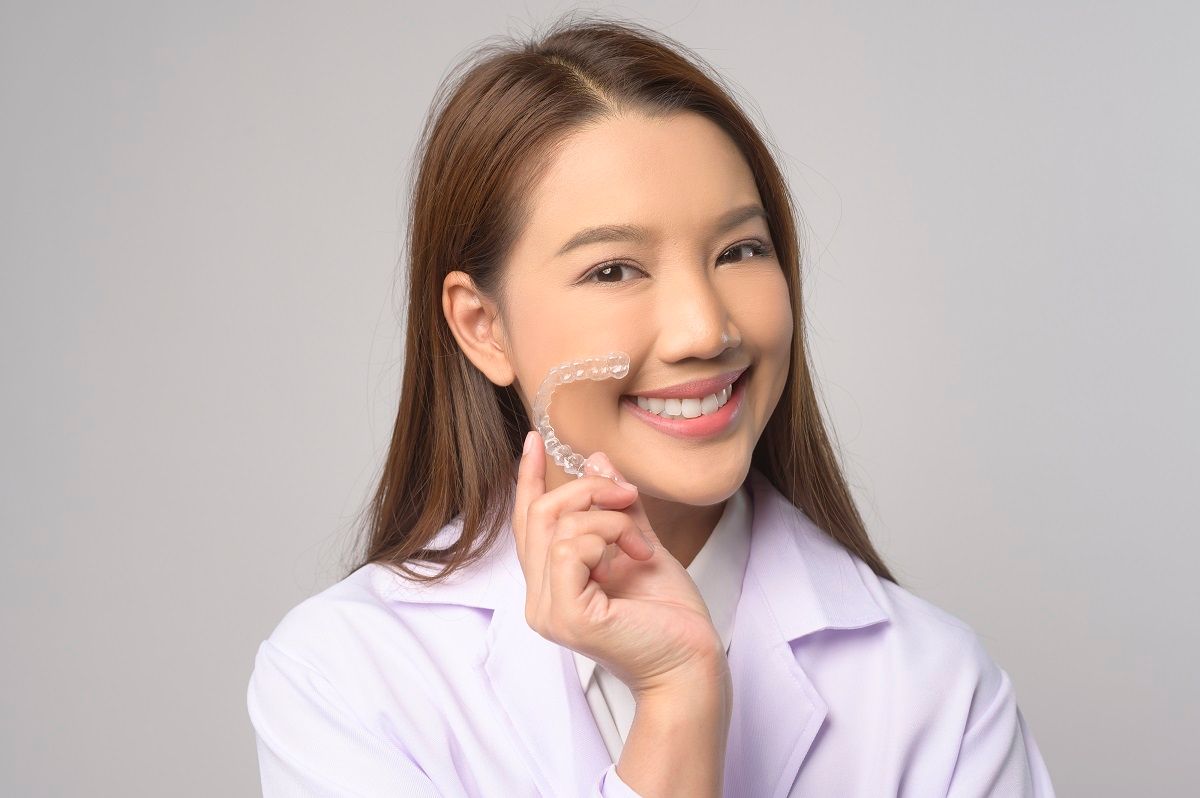

Invisalign rubber bands: Why do I need to use rubber bands with Invisalign braces?
Traditional metal braces can straighten your teeth with metal wires and brackets. Rubber bands are attached to some of your brackets to exert more power on specific areas of your mouth. However, a more covert alternative to conventional braces is Invisalign braces. It uses translucent plastic aligner trays that fit perfectly on your teeth to correct your smile. Similar to how they do for conventional braces, Invisalign rubber bands help apply force to particular areas of your mouth. Every week or every other week, you'll change your aligner with a fresh one. Your orthodontist might occasionally advise wearing rubber bands together with Invisalign.
Find out what conditions necessitate rubber bands and when your orthodontist might urge you to use them with Invisalign braces.
Purpose of Invisalign rubber bands
Rubber band elastics apply stress to your teeth in specific directions to treat bite disorders such as overbite or underbite. Depending on the bite ailment you're treating, your orthodontist will arrange the elastics in different patterns. Invisalign rubber bands treat the following conditions:
Invisalign rubber bands for an Overbite
Class II malocclusion," often known as an overbite, is the most prevalent bite issue treated with Invisalign. An overbite develops when your bottom jaw's last teeth are further back in your mouth than your upper jaw's last molars. Because of this mismatch, your upper jaw projects forward.
In a study of 2017 on Invisalign, Invisalign successfully improved overbites in a group of 120 adults aged 33 on average.
Invisalign can cure an overbite by attaching elastics from your upper canines to your lower teeth. The three-pointed teeth on the left and right of the middle of your mouth are known as canines.
Invisalign rubber bands for anterior Open Bites
When you close your mouth, your front and lower teeth slant widely and do not touch. This is known as an anterior open bite. Orthodontists use elastics to connect your top and bottom front teeth to correct this bite with Invisalign. Invisalign could be beneficial for addressing mild open bites in adults.

Does everyone need Invisalign rubber bands?
Elastics are not necessary for everyone who undergoes Invisalign. You may not need elastics if the misalignment you're treating is minimal, such as mildly overcrowded teeth or little gaps between your teeth.
Elastics are most likely required if your top and bottom teeth are misaligned, such as an overbite or underbite.
How visible are Invisalign rubber bands?
Many people prefer Invisalign braces over regular braces because they are more discrete. Adding elastics and Invisalign buttons may make them more visible, but it depends on where you need them.
According to "PORTH Personalized Orthodontics," buttons are little regions of bonding material placed to your teeth that help attach elastic bands. They're usually the same color as your teeth and are barely discernible, especially if they're in the rear of your mouth.
Elastic bands are typically more visible than buttons. If you require the elastics towards the front of your lips, they will be more noticeable than if you need them in the back.
If you're anxious that your Invisalign will be visible, speak with your orthodontist to find out what to expect.
How do you care for your mouth while wearing hooks and rubber band aligners?
Because elastics lose elasticity over time, it is critical to replace them regularly. Your orthodontist may advise you to change them two to four times per day. If you're going out and don't have new elastics, it's better to wear your old ones than none.
Even though you'll be replacing your Invisalign trays regularly, keeping them clean is critical. Here are some tips for cleaning your Invisalign aligners and maintaining oral health.
- Each night, rinse your aligners with water.
- Use a soft-bristled toothbrush to remove any food particles that have become adhered to your trays.
- When not in use, keep your Invisalign aligners in their protective case.
- Avoid using harsh cleaners such as denture cleaner, mouthwash, scented soap, or toothpaste on your trays.
- When eating, remove your aligners and elastics. Avoid using hot water to clean your trays.
- Brush and floss your teeth as usual but be mindful of any buttons in your mouth. You can avoid unintentional harm by using a gentle toothbrush.
Conclusion
Your orthodontist may recommend that you use rubber bands with your Invisalign aligners. These elastics, like traditional braces, align your top and bottom teeth and cure issues such as an overbite or underbite.
When it comes to wearing elastics, it's critical to listen to your orthodontist. You may only achieve the desired outcomes if you follow their directions, or your therapy may take longer.
Contact your Lafayette dentist, Dr. Massood Darvishzadeh, DDS at Lafayette Dental Group, to know about Invisalign rubber bands.
Resource:
Invisalign or Braces, which is better?
*This media/content or any other on this website does not prescribe, recommend, or prevent any treatment or procedure. Therefore, we highly recommend that you get the advice of a qualified dentist or other medical practitioners regarding your specific dental condition*
Services
Contact Us
3466 Mt Diablo Blvd., Suite C207
Lafayette, CA 94549
2025 © Lafayette Dental Group | All rights reserved | Powered by: Vigorant, Inc.
